Fittonia: description, types and care at home
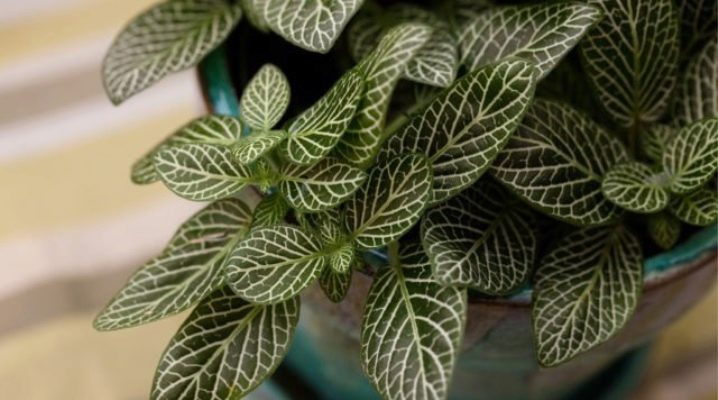
For avid lovers of caring for their own garden on the windowsill, the name "fittonia" certainly says a lot - in certain circles this houseplant is very popular. At the same time, not a single type of Fittonia in our country has yet become hackneyed, therefore, growing it at home, you can satisfy your own gardener pride.
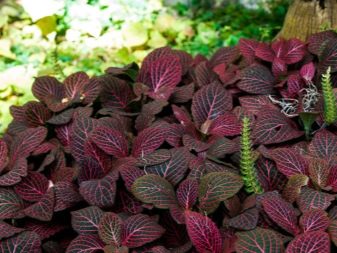
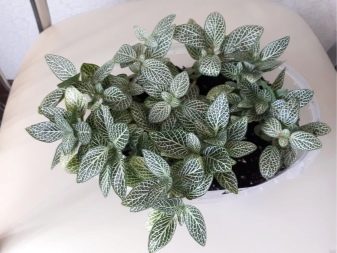
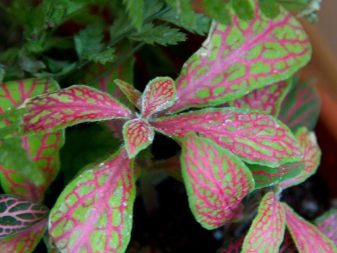
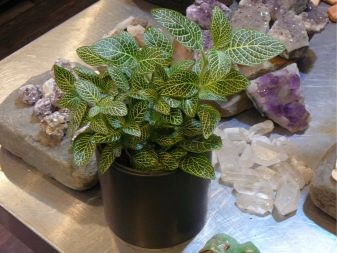
Peculiarities
The description of Fittonia should begin with the fact that it is a genus of the Acanthus family, reciting only four perennial species and originating from South America. Three species are creeping plants, and only one is erect. At home, only two species are bred - Vershaffelt fittonia and silver-veined. A special advantage that makes people grow Fittonia as an indoor flower is the very attractive appearance of the leaves: the main background is always olive green, but, depending on the species, it is crossed by either silvery or bright pink veins.
Its flowering is relatively inconspicuous - with small white or yellow flowers, barely noticeable against the background of leaves, which are always beautiful.

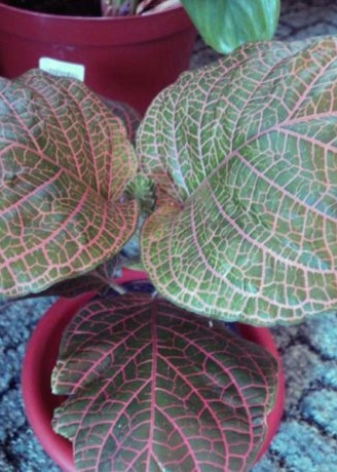
Plants of this genus were discovered relatively recently, and therefore did not have time to firmly gain a foothold on our windowsills. Proof of recent acquaintance with them is that they got their name in honor of the two Fitton sisters, who lived in the first half of the century before last. The young ladies are best known as the creators of the first full-fledged textbook on botany, for which it was decided to reward them with a nominal genus of plants.
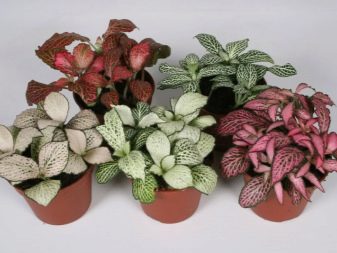

Varieties
As already mentioned, only two species are cultivated by gardeners, each of which is creeping, but it grows thickly in width. The length of the leaf usually does not exceed 10 cm. The fundamental difference between the two types is what immediately catches the eye: the white-veined fittonia has narrow streaks of silvery or white shades, while in Vershaffelt's fittonia they are pink or even slightly red, and they have a much wider width, leaving almost only the edge of the leaf for the greenery.
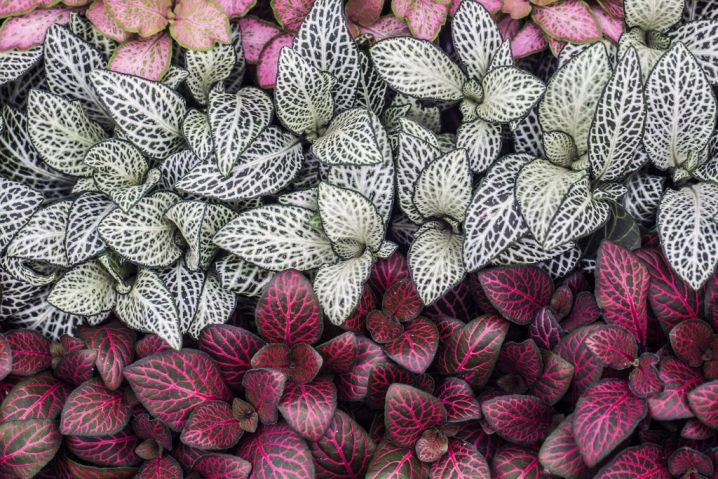
At the same time, cultivation by people could not but lead to a certain selection, thanks to which special cultivars have already been formed today. Each has its own characteristics, which he could have received from several different wild-growing ancestors at once, therefore you will not find analogues in the wild. It is the varietal fittonias that usually grow on the windowsills, since the wild-growing specimen simply cannot get to our area. Consider the names and characteristics of the most popular varieties.
- Josan. It differs in a relatively soft color of the leaves - although the veins are pinkish, they do not “cut” the eyes too much. The green part of the leaf is also distinguished by a soft light tone.
With a high degree of probability, you have seen this plant in various public institutions, just did not know that this is Fittonia.
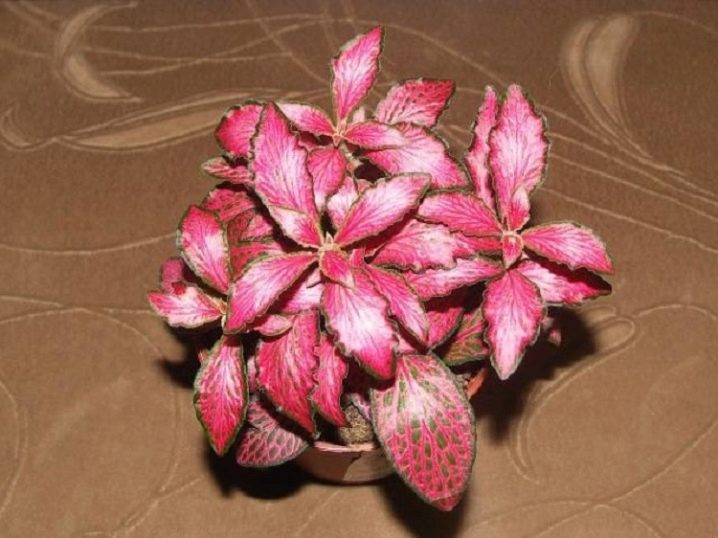
- White Anna. Another example that is very popular in public places. When breeding it, the breeders focused on ensuring that the white veins were as clearly visible as possible against an emphasized green background. In this case, the veins are, as it were, cut into the depths of the leaf structure, while the main pulp hangs over them somewhat.
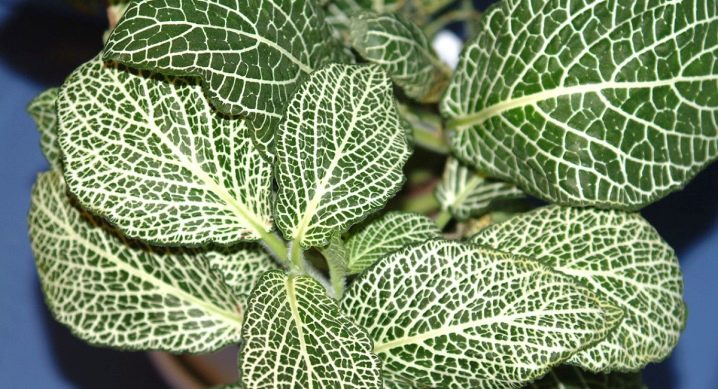
- "Skeleton". This variety, unlike the previous two, focuses on the maximum contrast of colors - the pale green and light green pulp of the leaf is densely cut with the same delicate pink veins. The variety received a somewhat unusual name for the fact that its veins do not go deep into the structure of the leaf, but, on the contrary, protrude somewhat from it, resembling a living circulatory system from afar.

Conditions of detention
Fittonia came to us from afar - from countries where climatic conditions are radically different from ours. For this reason, she is a purely indoor plant, not a garden plant, but even in the home, she needs to create certain conditions in which she will feel good. This is usually not that difficult, but the instructions should be followed. So that a green pet does not need anything, we will take a closer look at the optimal conditions for growing it.
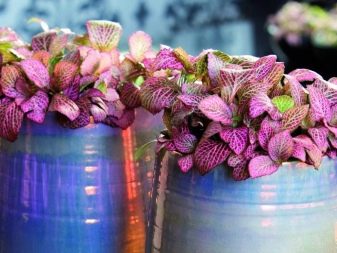
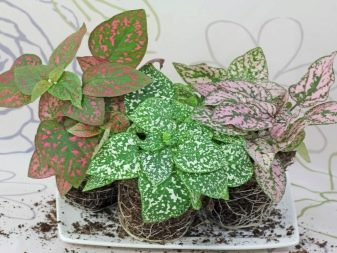
Lighting
Gardeners have long noticed that plants with bright and beautiful leaves always require intense lighting - indeed, who would need this beauty in the dark. Those who grew Fittonia at home note that with a lack of lighting, all the brightness from the leaves disappears very quickly, they become monochromatic, instead, the stems begin to lengthen intensively, trying to reach for the light... As soon as you notice such symptoms, immediately change the dislocation of the flower, otherwise the consequences of improper placement will soon be greatly aggravated.
At the same time, the plant will not appreciate direct sunlight either. The most correct light for her is bright, but diffused, as it could be in a sparse tropical undergrowth, therefore it is most reasonable to keep a pot with Fittonia on the windowsills of those windows that face the west or east, and also shade the pot a little.
At the same time, a flower that is accustomed to bright lighting over the summer and has not known long winters in its homeland may require additional lighting in the cold season - fortunately, artificial will also work.
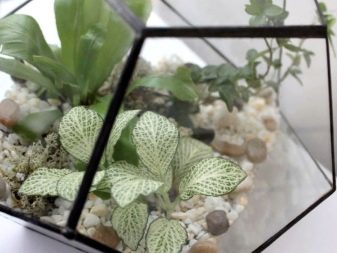
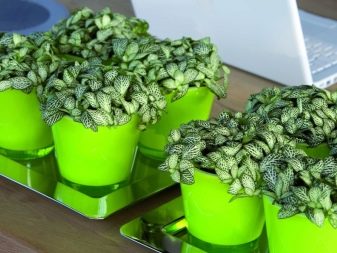
It is also worth saying that Fittonia quite easily adapts to the conditions in which it grew up. Bring her from the tropics, and it will be very difficult for her to survive in a typical Russian apartment, but if you yourself multiplied it and initially put it in a comparative shade, then a specimen that grew in a shaded place can be surprisingly tenacious.
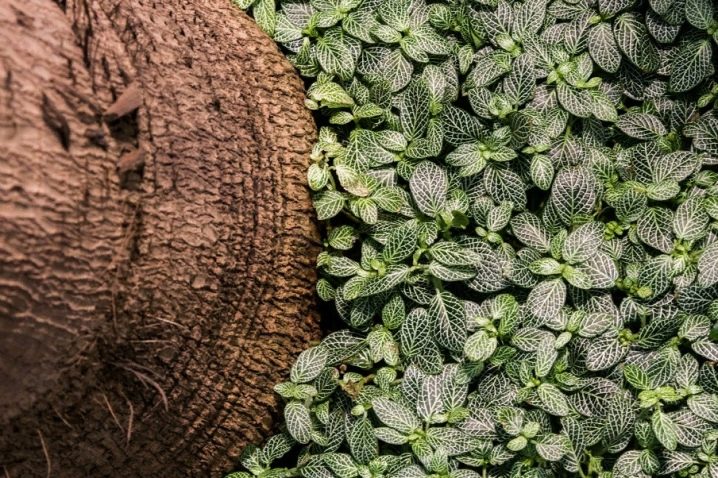
Temperature and humidity
In those areas where Fittonia grows wild, there are practically no temperature drops - both seasonal and daily. Such a phenomenon can play an extremely cruel joke with a gardener who did not know this, because a pot of Fittonia, even in summer, cannot be taken outside for a long time - unless literally for airing and only during the day. The fact is that in conditions of stable temperature there are no pressure drops, and therefore strong winds do not arise - accordingly, our drafts can easily destroy the bush.
The same is true in indoor environments, so be careful when choosing a pot location.
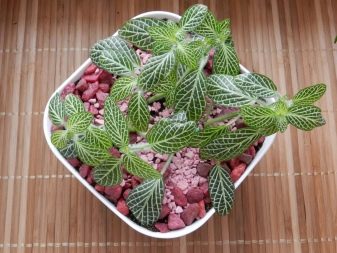
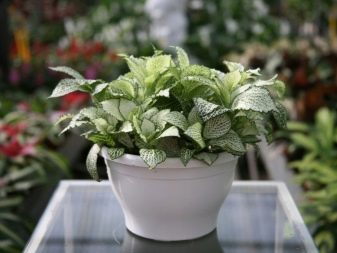
Unlike many other tropical plants, which can hibernate during the winter when the room temperature drops slightly, Fittonia can remain active all year round. Another thing is that for this she needs "beach" conditions with temperatures not falling below 25 degrees. At the same time, even a slight coolness is destructive for her - experienced gardeners note that already at 17 degrees the plant shows all the signs of decline.

Among other things, for Fittonia, dry air, which is normal in our latitudes, is also very unusual, therefore the plant needs timely spraying of the foliage. In winter, due to the work of heating, the air in the room usually becomes even drier, and in such a situation, experts advise not only to spray the plant, but also to increase the humidity by other methods, otherwise the plant may die.
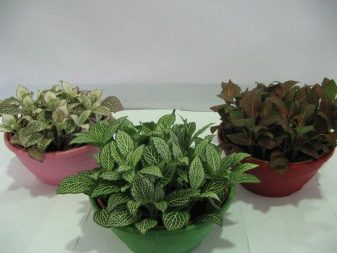

How to care?
Fittonia on the windowsill is the pride of many florists not only because it is a rarity, but also because it is not so easy to grow it - in fact, this is one of the factors that prevent this indoor flower from becoming truly massive. On the one hand, caring for such a plant at home does not require any incredible feats, on the other hand, the bush requires constant attention to itselfbecause our standard terms are too unacceptable for him. Judging by the requests of this plant, you should really love gardening and never be away from home for a long time if you want your green pet to be in order.
At the same time, Fittonia is very sensitive to any deviations from what it considers to be the norm, therefore all the recommendations below must be followed in strict accordance with the instructions.
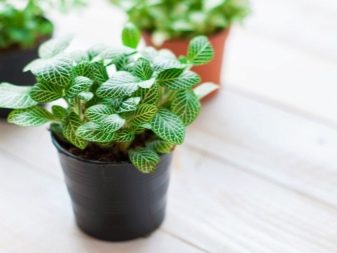
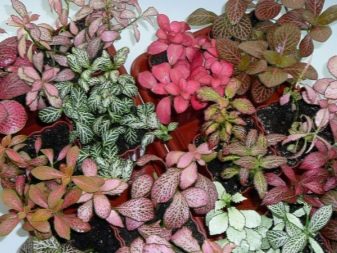
Watering
Both species and all artificial varieties of indoor fittonia belong to those fastidious plants that are very sensitive to watering, and categorically do not tolerate either shortage or excesses. If the soil in the container has dried even for a short time, at best you will get off with discarded foliage, but it is enough to gape a little longer - and the bush will die completely. This provokes many botanists to water Fittonia more often, but here the opposite problem lurks - from excessive soil moisture, the roots rot quite easily, and the consequences of such a disaster are obvious.
A person who grows Fittonia requires a very delicate and precise sense of proportion when watering. - you have to find a kind of "golden mean" when the soil is never dry, but does not turn into a swamp. At the same time, it is still easier to dry out the soil, since this plant is able to evaporate moisture from the surface of the leaves, and this process is especially active when the ambient temperature rises. In practice, this means that you will not calculate the ideal amount of water in one irrigation and the universal frequency of the procedure - you will have to react every time according to the situation.

If we consider the need for watering seasonally, then in the summer, as we understood, drying out of the soil and evaporation from the leaves occurs very quickly, so you should water a little more often. In winter, especially if you have taken care of normal air humidification, Fittonia consumes less water, since it is not so hot, and growth slows down, so the risk of root flooding is greatly increased. If the room is not hot, in some cases, you can even water the fittonia not immediately after the top layer of the earth has dried, but only a day after that.
Although at first it will seem very difficult to comply with the watering regime, over time you will get the hang of it and will instinctively understand when you need to water your garden again.
At the same time, at the initial stages of growing fittonia, you need maximum care and the ability to notice the slightest changes in the state of the plant, otherwise the plant may not last until you gain experience.
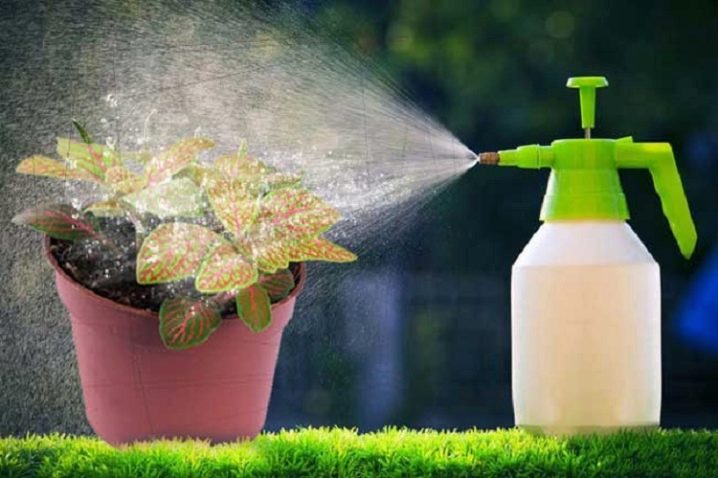
Top dressing
Fittonia refers to plants that do not assume that you can forget about them even for a short while, therefore, it needs regular feeding, and all year round - even in winter, when growth slows down.
At the same time, the plant does not require any specific fertilizers, ordinary mineral feeding is best for it, but, as in the case of all other care parameters, it is very important not to overdo it. People with experience in growing Fittonia argue that the instructions applied to the fertilizer package do not work in this case - the concentration of minerals in the solution should be approximately half as much.
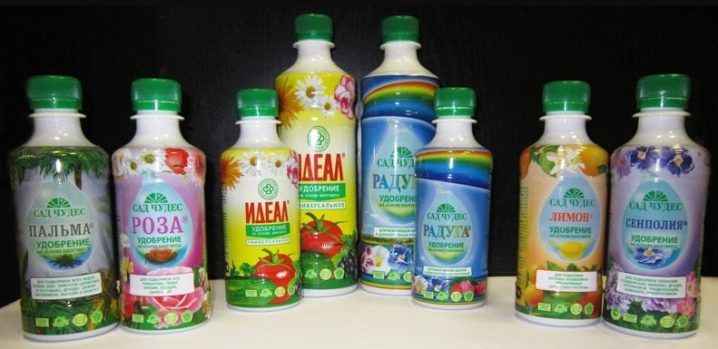
The frequency and intensity of fertilization largely depends on the type of soil in the pot, and on the age and size of the plant, but the average recommendations state that fertilizing is applied every two weeks in summer, and monthly in winter.
Pruning
This plant itself belongs to the creeping plant, but gardeners usually prefer to additionally stimulate growth to the side, and not upward, therefore, even in the early stages of Fittonia development, they resort to pruning and pinching. If everything is done correctly, you can achieve that the bush is truly lush and beautiful - for this it is important to pinch the top of the shoots of a young specimen in time.
Fittonia forms a green mass very quickly, and in a few years it will be much larger than it is now. The problem is that the roots are not able to feed a plant of immense size, therefore after 3-4 years you will see that the leaves are formed only closer to the ends of the shoots, while the root areas remain bare. Anti-aging pruning helps to partially solve the problem, when old shoots are cut down to the lower leaves, which are left no more than a few pieces. This encourages the plant to shed its leaves lower, closer to the roots. However, such a trick will not work endlessly, therefore many advise to simply propagate Fittonia in a timely manner, since at first there will be no such problems with a young plant.
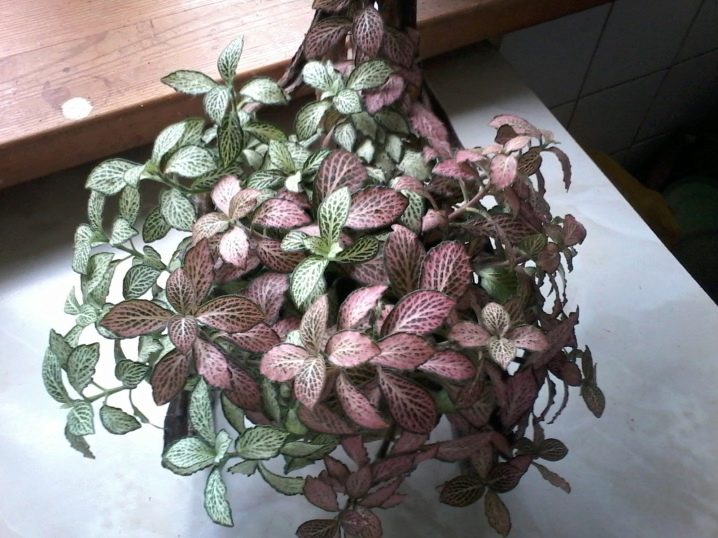
Transfer
Since the plant has a very high growth rate, sooner or later it will no longer be enough for the container in which it was originally planted. It is assumed that for the normal life of the plant, it will have to be transplanted annually, and only for adult plants that already grow in a large pot, chosen with a margin of space, an increase in the interval to 2 years is allowed. For this reason, gardeners rarely plant Fittonia in a florarium or aquarium.
If you see it in such a complex composition, the selection probably looked like this after purchase, only the fittonia itself did not take up so much of the space inside.
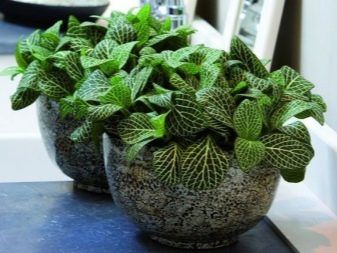
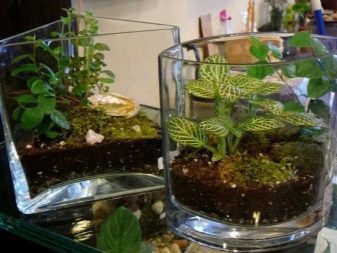
When planning to plant Fittonia, pay attention to the criteria for choosing a pot. This plant does not differ in deep bedding of the root system, on the contrary - it can easily grow in a shallow but wide vessel. Conversely, a deep pot can even be dangerous for a green pet, as excess moisture in the lower layers of the soil will acidify and can create problems for the roots. However, even if you don't have to choose much and there is only one pot of an "inappropriate" shape at hand, the situation can be corrected by a very thick bottom drainage layer, the height of which often exceeds a third of the entire height of the vessel. Please note that due to the plant's sensitivity to over-watering, a drainage layer must be present in any case, even if the container is fully "optimal" criteria.
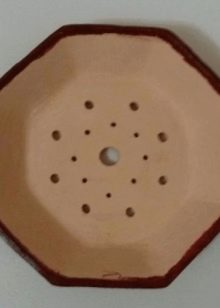
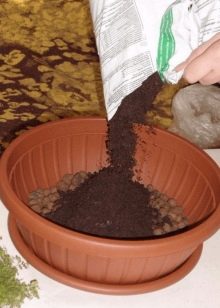
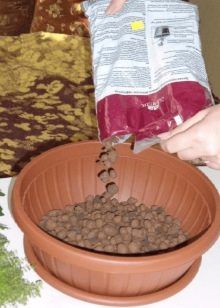
Almost the only criterion by which Fittonia is completely undemanding is the choice of soil. Most gardeners prefer to make a mixture for such a plant on their own, since this task is very simple: you need to mix 3 parts of simple garden soil of medium acidity with humus, peat and sand, each in one part.
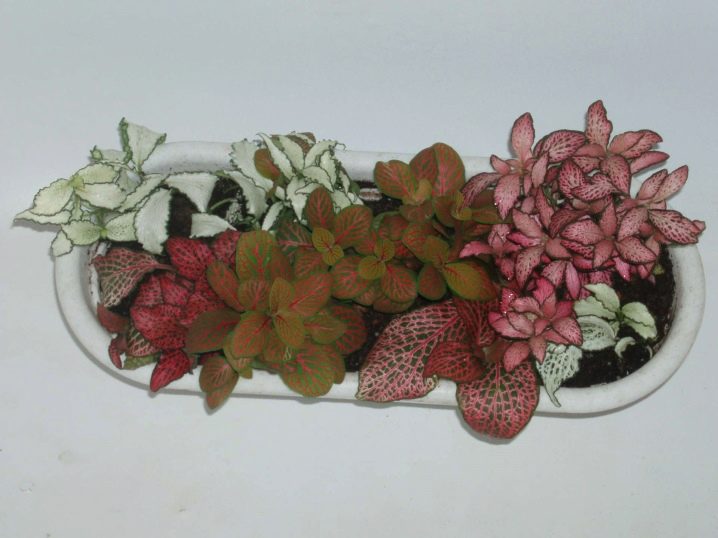
Reproduction
A middle-aged Fittonia quickly decays and ceases to be decorative, so sooner or later you will think about propagating it and growing young specimens instead of old ones. Fortunately, this plant reproduces very easily, and even in three different ways.
The simplest option is reproduction by division. In the spring, when a planned transplant is carried out, simply separate a small part from the root system - it will become the basis for a new plant. The roots do not strongly resist division, they can be separated even with bare hands without much effort, and rooting is quite easy.
There are no difficulties here, you just started replanting one copy, and in the end you transplanted two separate ones as described in the corresponding section.

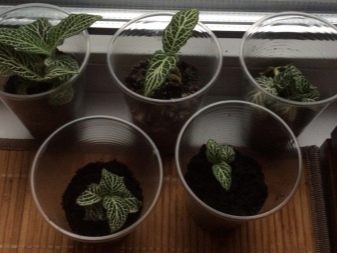
Propagation by cuttings is an alternative method that is most productive from late spring to early summer. To do this, simply separate the stalk by selecting the tip of one of the shoots. In terms of size, be guided by 3-5 leaves on the separated part. You can root the cutting by any means - you can even pour 1 cm of water into a small glass and put it there. And you can immediately plant it in moistened sand, peat, sphagnum. Regardless of which way you decide to root the shoot, create a greenhouse for it - just cover it with any airtight hood. In this case, the stalk must sometimes be ventilated and sprayed. When the young plant takes root, you can transplant it into a permanent pot.
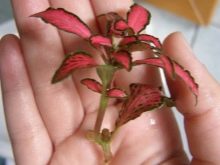
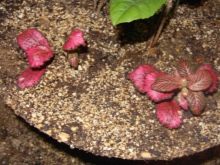
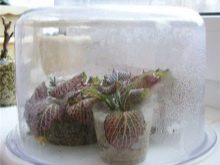
Fittonia can be propagated using layering - who once grew gooseberries, he knows what kind of procedure it is. Its meaning is that one of the long, but not too old shoots of the plant, without being cut off from the main stem, is buried with its upper end into the ground - either in the same pot or in a neighboring one. Leaves from the future underground part are preliminarily removed, and so that such a curved twig does not spring back, it is additionally fixed by any available means - most often with paper clips or wire staples. After some time, the cuttings will give their own roots, and at this moment it can be cut off from the mother plant so that it becomes independent.
If the dropping was carried out in the same pot, it is at this stage that the plants should be planted, otherwise, due to the rapid accumulation of green mass, they will soon grow together again to a state where they can no longer be unraveled.
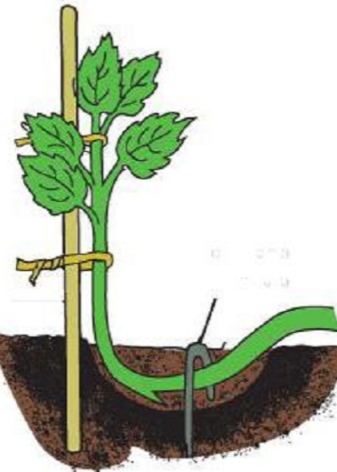
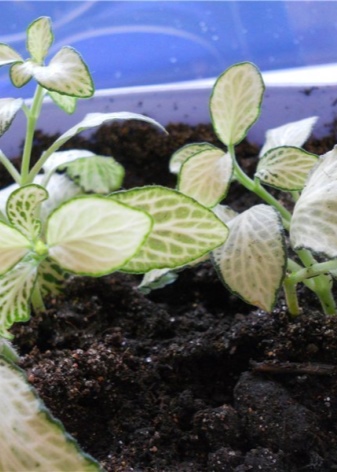
Diseases and pests
In most cases, fittonia, which is properly cared for, does not have health problems, and many frightening symptoms are caused precisely by mistakes in care. For example, due to excessive watering, the plant often dies, being affected by rot, and it makes sense to do something only if the problem is noticed at an early stage.
Excessive watering may also be indicated by the falling (or yellowing) of all the leaves (if only the lower ones are just aging), but the same symptom also indicates drafts or cold.
The opposite problem of lack of moisture is expressed in the fact that the tips of the leaves dry out, and sometimes it is not weak watering that is to blame, but too bright sun. To save Fittonia, you need to understand why it dried up and fight the cause.

Often they also complain about the appearance of brown tints in the foliage. Such a problem usually indicates an unstandardized amount of minerals, and this can be either a deficiency or an excess.
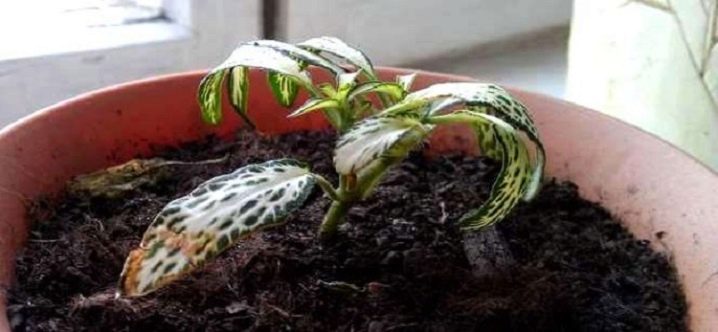
Among the pests of fittonia, it is worth highlighting the scale insect, mealybug and spider mite. These enemies are typical of many other indoor plants, which is why most gardeners are well aware. You can fight the enemy both with the help of a special "chemistry" directed specifically against him, and with careful washing of the foliage with slightly soapy water, and in the case of a mealybug, also with an infusion based on calendula.
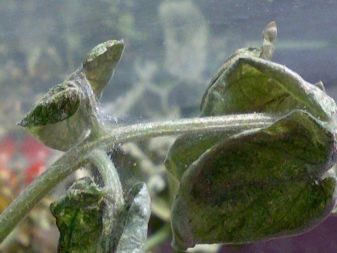
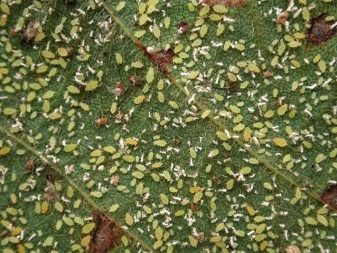
How to care for Fittonia, see the video below.
























The comment was sent successfully.